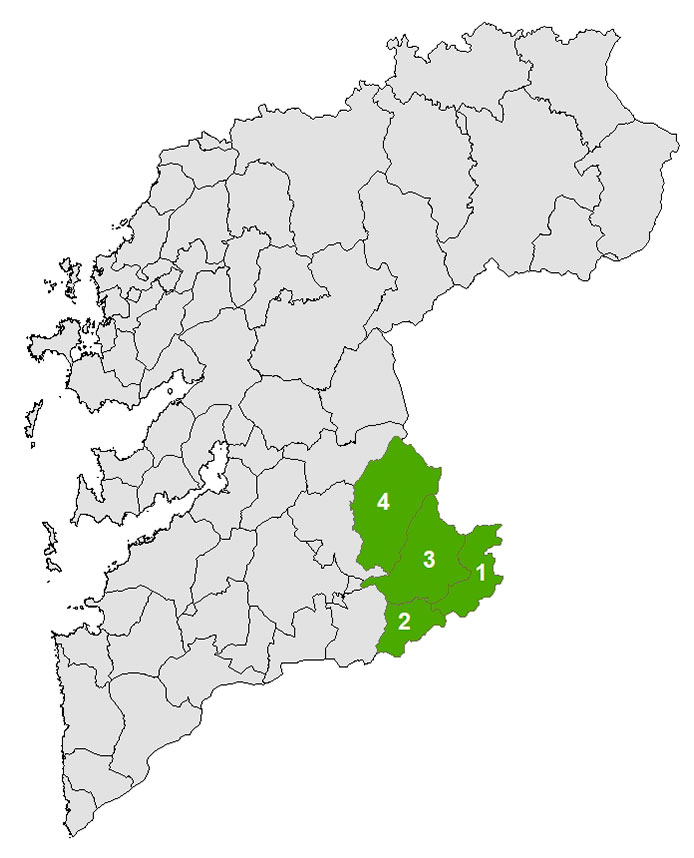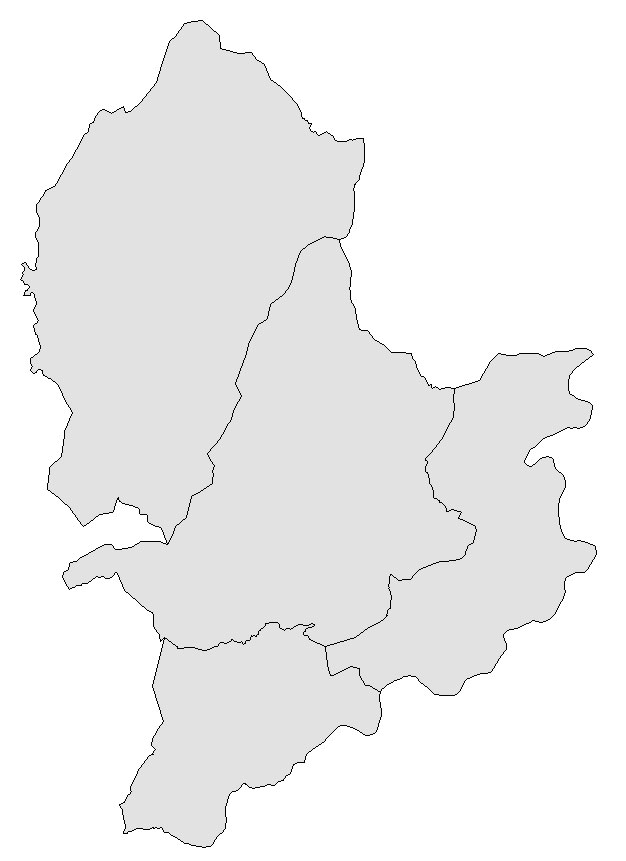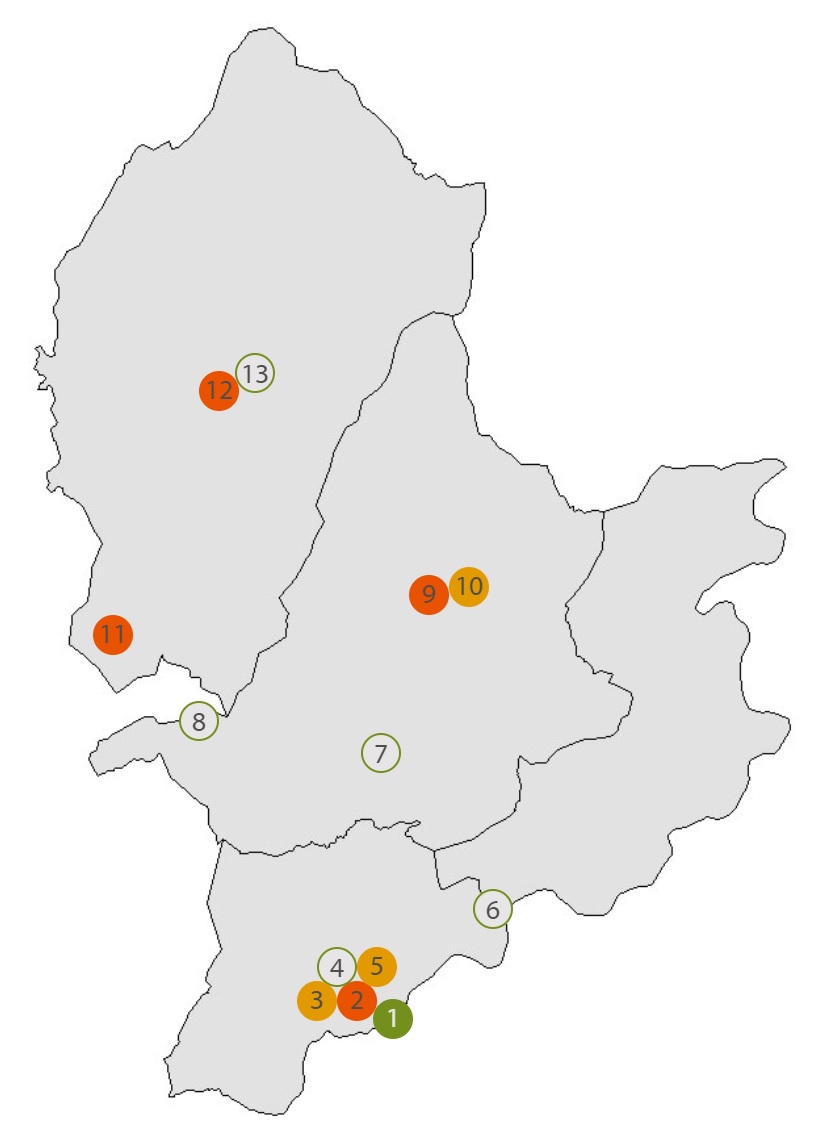01.EXPERIENCE THE REGION OF A PARADANTA
WINE AND LAMPREY
WINE AND LAMPREY
Enjoy a landscape with high mountains, quiet valleys and rivers flowing into the Miño River. A fertile land where its inhabitants have preserved customs and activities closely linked to nature, such as the fishing of lamprey, grapevine cultivation, or the exploitation of timber from the forests or beeswax processing.
We invite you to relive tradition with a visit to the towns of Arbo, Crecente, A Cañiza and Covelo.
This region was named after the A Paradanta Hills. It is a region of high lands and the origin of many rivers and streams that create small valleys, and flow into the Miño River. In Arbo, the traditional methods to catch lamprey are still used, partly due to the old pesqueiras, stone constructions to catch this fish. The region also has a deep-rooted winemaking tradition that is currently gaining popularity with the improvement of the vineyards. A must-see is the Centro de Interpretación do Viño e da Lamprea, which disseminates the tradition and history of two elements characteristic of the town and, hence, of the region: wine and lamprey.
In A Paradanta you can learn about other traditional activities, such as the production and processing of beeswax, which was carried out in craft workshops, or about the timber production industry using the wood taken from its forests. Moreover, the pleasure of enjoying the natural landscapes, while hiking or practising other sports, is a delight for the senses. And, to round off your experience you can taste typical products such as lamprey "a la bordelesa" (with bordelaise sauce) and xamón (cured ham) from A Cañiza paired with a good local wine.

- 1 - Crecente
- 2 - Arbo
- 3 - A Cañiza
- 4 - Covelo


MUSEUMS
-
This interpretation centre is dedicated to disseminating the history of wine and the traditional fishing of lamprey, two products that are part of the identity of the town. During your visit, you will learn about the winemaking process and the wineries, as well as about the history and the traditional methods for catching lamprey.
-
Located in the old quarter of A Cañiza, it exhibits the pictorial work of Diego Giráldez, a renowned hyperrealist painter and a major contemporary Spanish artist.
-
This interpretation centre introduces us to the trade of the borreiros (waxers), explains the wax making process, the techniques used to obtain it, as well as the manufacturing of candles or votive offerings.
-
Located in a well-preserved 16th-century manor house, this “house-museum” keeps one of the most important ethnographic collections in Galicia, with more than 6,000 pieces displayed in the different rooms of the house.
OTHER POINTS OF INTEREST
- As Laxas, 16, 36430 Arbo
- Finca A Moreira, s/n, 36438 Arbo
- Lugar O Torgo, Parada de Achas, 36887-A Cañiza
-
The old monastery of A Franqueira is located in the heart of the hills of A Paradanta, and the earliest record of the building is from 1063.
-
It was built in 1922. It consists of a sawmill, a wood-drying kiln, a small forge, a storage house and a furnace to eliminate the waste. The wagons transported the wood to the inside of the sawmill. It was dedicated to the fabrication of carts.
CULINARY MOMENTS
-
Festival of National Tourist Interest held in April. There you can enjoy lamprey in different ways: in empanada (typical Galician pie with a savoury filling), dry or stuffed, and paired with wine from O Condado.
-
Festival held in August in which the lamprey dried in the local drying rooms can be enjoyed in different ways: roasted, battered, stuffed, with noodles…, but always paired with the best wines under the Designation of Origin Rías Baixas.
-
This is a Festival of Tourist Interest in Galicia, held in August, which promotes the best-known product from A Cañiza: the xamón (cured ham). The cold and dry climate of the town guarantees the good curing of meat, especially of ham.
NATURAL SPOTS
-
The pesqueiras, also known as pescos, are stone constructions found on the banks of the Miño River that may date back to the Roman period. These were built in the shape of parallelepipeds that create currents and enable the capture of different species of river fish, mainly salmon, lamprey and tarpon. The best way to admire the pesqueiras is to follow a signposted route that runs along a small stretch of the Miño riverpath.












